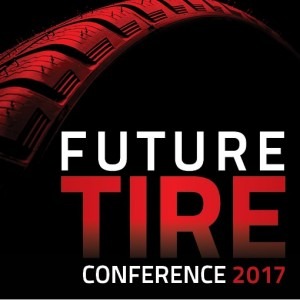Head automation & electronics at Apollo Tyres (Hungary) KFT, Shibu George, will give the opening keynote presentation at this year’s Future Tire Conference, taking place in Cologne, Germany on 27-28 June.
In this Q&A, George has discussed new mixing and extruding technologies by tire makers, automation and the role digitalisation in the plants of the future.
First, please identify one significant technical development in the tire industry over recent years, and explain its importance?
The increasing demand by the European Union and original equipment manufacturers to reduce rolling resistance and make improvements in wet traction and noise has given new horizons to the tire industry. This in turn has boosted investment and research opportunities for future technology.
The main challenge faced is improving both rolling resistance and wet traction without compromising on mileage. This is a big challenge given that a 4-5% reduction in tire rolling resistance translates into about 1-1.5% fuel economy or mileage boost. Conventionally, to ensure low rolling resistance tires had to be composed of "hard" compounds and inflated to high pressures. But in this case, we get poor wet traction, which ultimately compromises the riding quality. In the past, there was always a trade-off between rolling resistance and wet traction.
With new materials (Silica based compound) and sculptures we are able to achieve this. But to meet the above requirement compound mixing calls for improved mixers with capabilities to mix this new range of compounds and extruders with multiple tread profile for different zones (tread, cap, cushion, chimney, wing tip).
We observe significant development in extrusion i.e. for tread/side wall extrusion - Qudaraplex and Quintuplex are the new generation extruders. Also, there are tire manufactures looking to go for Hexa and even seven extruders. Another significant technical development is in sophisticated mixing technology for new generation compounds.
What do you see as the main barriers to the development of the tire manufacturing industry over the next few years?
As of now, the main challenge to the industry is having a single tire that operates satisfactorily across different geographical conditions. So, the manufacturer has to invest in R&D to have different compounds in one plant but even then one tire can't meet different geographical demands.
Secondly due to the growing variety of vehicles in the automotive industry, the demand for different sizes and type of tires (SKU) is increasing.
This forces the tire industry to have production capacities with multiple SKU's and smaller volume. This in turn calls for planning the equipment's with lesser cycle time and faster size changeover. The tire industry is profitable with economy of scale, so planning for a higher production capacity, multiple SKUs, quick size change and full automation is vital.
All these factors call for huge investment in latest machinery and technology.
Which technologies will play the biggest role in shaping the ‘tire factory of the future’, and why?
My personal view is that radial technology is here to stay for long. But these tires would require high level of control in processing which is very sophisticated. Therefore, major improvement would be in the automation and data capture from shop floor in shaping the "tire factory of the future".
Increase in the level of automation in machinery brings one more dimension i.e. connecting all the machinery to the plant IT network and collecting the information with RFID / Bar code readers connected to it. This requirement is growing very fast in automotive and tire industries and is called MES i.e. Manufacturing Execution System. The basic idea is all the process equipment are connected to the plant Ethernet network and information is collected from every equipment for the purpose of mistake proofing in process, tracking and tracing all the components used to build the tire etc...
So MES provides overall control and management of the factory floor, and gives updated information to the ERP. The data generated by the above systems should be translated as information by intelligent reporting software’s, which will help the factory managers to make the strategic decisions and benchmark performances.
For a 'tire factory of the future’ the capability of computer simulation should also be considered. The expected goal of computer simulation is to produce a better performing tire, material or manufacturing process in less time and at a lower cost.
Looking into the crystal ball, what big changes do you expect to see in tire manufacture and supply by 2030?
Over a period of the last few decades the tire industry has seen a lot of changes. Earlier, to qualify as tire building operators only elementary school education was a necessity. But today the industry prefers to take only qualified technicians. This is mainly due to the increase in the level of automation in the machinery and the plant.
When we talk about automation, industrial robots must be mentioned. With the cost of the industrial robots decreasing day by day, robotics finds widespread use.
Next-Gen in Automation would be, industrial IOT – internet of things i.e. “intelligent connectivity of smart devices” (sensors, actuators, I/O consoles etc.). So, these devices which communicate with each other help to take better and faster decisions in the process or the material flow on the shop floor. Industrial IOT is going to be the future of manufacturing for “smart factories” and it will lead to another industrial revolution.
Expected area of Automation in the Tire Industry -
1. Automatic storage and retrieval system (ASRS) for raw material and finished goods warehousing
2. Auto guided vehicle for the transportation of the semi-finished goods
3. Untouched auto transportation of green tire to warehouse,
4. Automation of testing process
Main agenda of automating the process is to have consistent quality and avoid manual errors. Having spoken about the usage of high level automation in the tire industry, tire as a product is also seeing lot of development like usage of tire sensors and electronics. Tire manufacturers are working on this concept to have tire monitoring systems for displaying tire pressure, temperature and wear. Idea would be to send alert signals in case of any issues.






